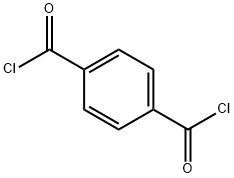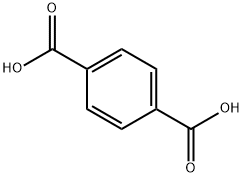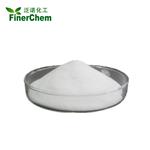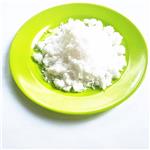Chemical Properties
monoclinic crystals or white crystalline flakes. Soluble in ethanol and organic solvents.
Uses
Terephthaloyl chloride acts as a monomer with p-phenylenediamine used in the preparation of polymer viz. poly paraphenylene terephthalamide. It is an active component in performance polymers and aramid fibers, which gives flame resistance, chemical resistance, temperature stability, light weight, and very high strength. It is also used as an effective water scavenger, utilized to stabilize isocyanates and urethane prepolymers. Further, it is used in the preparation of liquid crystalline thermosets by thermal cyclotrimerization of dicyanate compounds of ring substituted bis(4-hydroxyphenyl) terepthalates. In addition to this, it is involved in the condensation reaction with difunctional alfa, μ-diaminopolystyrene to get chain-extended polystyrene containing amide bonds along the polymer backbone.
Uses
Terephthaloyl chloride and Isophthaloyl dichloride have many similar uses as monomers for the synthesis of specialty fibers and as raw materials for polymers such as polyamides and polyesters. Dyemanufacture; synthetic fibers, resins, films; UV absorption; pharmaceuticals; rubber chemicals; cross-linking agent for polyurethanes and polysulfides.
Preparation
Synthesis of terephthaloyl chloride by thionyl chloride method: terephthalic acid is mixed with thionyl chloride, refluxed at 80℃ for 10-12h, then the thionyl chloride is evaporated, and the resulting crude product is distilled under reduced pressure to obtain the finished product.
General Description
Terephthaloyl chloride undergoes condensation reaction with difunctional α,ω-diaminopolystyrene to yield chain-extended polystyrene containing amide bonds along the polymer backbone. It undergoes interfacial reaction with bovine serum albumin to form thin cross-linked films.
Flammability and Explosibility
Non flammable
Safety Profile
Moderately toxic by ingestion. Corrosive. Combustible when exposed to heat or flame. When heated to decomposition it emits toxic fumes of Cl-. See also CHLORIDES.
Purification Methods
Crystallise the acid chloride from dry hexane. [Beilstein 9 IV 3318.]






